New Boston Historical Society
New Boston, New Hampshire

Samantha Plantin, born 1827 in New Boston
The Plantin Family in New Boston
This New Boston web page was created to complement the Manchester historical marker, adding what we know of the Plantin family in our town. Note: in our records the family name is spelled "Plantin", "Plantain", or "Planting"; we will use the spelling Samantha chose for her gravestone.
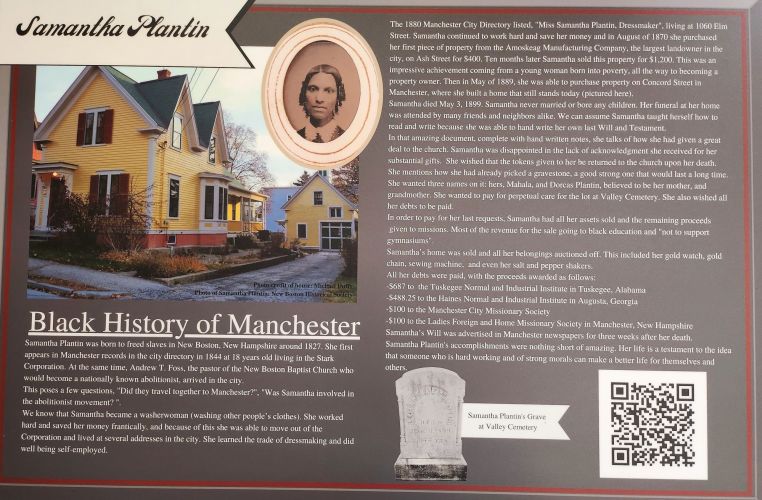
The historical marker explains Samantha Plantin's historical significance. Click the image to enlarge it. (Photo by Stan Garrity)
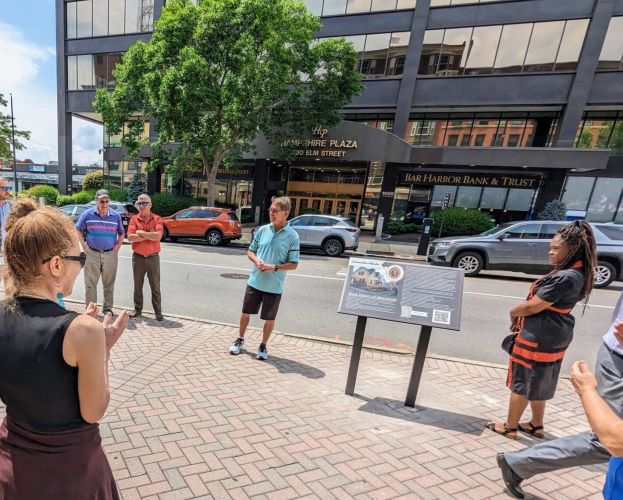
Stan Garrity stands beside the marker at its unveiling. (Photo by Carol Robidoux / Manchester Ink Link)
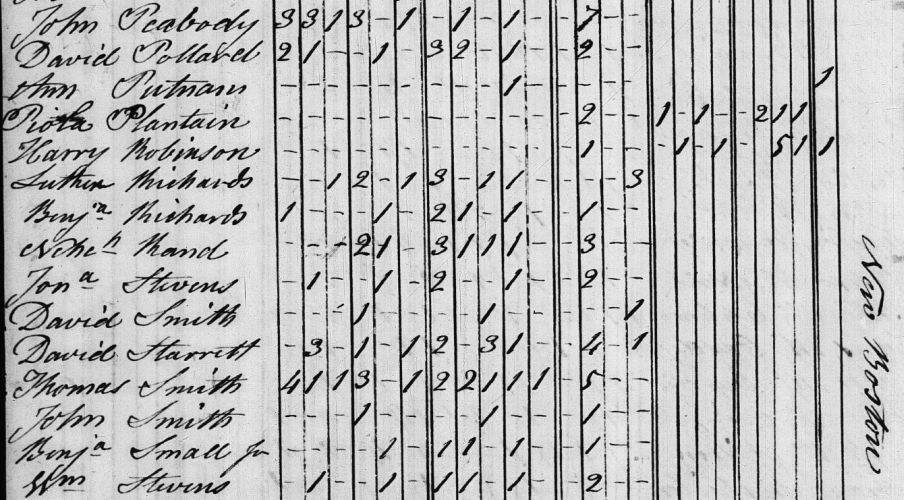
U.S. Census for New Boston 1820
The first record of Plantins in New Boston is from the U.S. Census of 1820. The census document shown above is complicated; let me explain how to read it. You'll see in the 4th row that "Piola Plantain" was the head of a household in which there were 2 Persons engaged in Agriculture — that's the first number 2 to the right of Piola's name. The other numbers tell us that the "Plantain" household included:
1 Slave, Male under age 14
1 Slave, Male, age 26 – 44 (probably Piola)
2 Free Colored Persons, Female age 14 – 25
1 Free Colored Person, Female age 26 – 44 (probably Piola's wife Dorcas)
1 Free Colored Person, Female 45 or older
Listed just below Piola Plantin is his neighbor Harry Robinson, the head of another Black household which also included enslaved and free people. The entries for their other neighbors show numbers in left-hand columns; these are the numbers of Free White Males and Free White Females living in each household.
The Census of 1820 was the first to have a category for "free colored persons" and I'm unable to explain why the Plantin and Robinson households contained both free and enslaved people. While slavery was not formally abolished in New Hampshire until the 1850s or 1860s, multiple sources indicate that there were few people enslaved in New Hampshire after the Revolutionary War. With respect to the Census, a chapter about slavery in the 1903 "History of Bedford" includes a theory proposed by Rev. Nathaniel Bouton, editor of the N. H. State Papers, that some people were "inadvertently reckoned as slaves" by census enumerators after the War. (I welcome corrections or additional information about this subject from knowledgeable readers.)

Pewter cup "given to Etta Woodbury when Etta was about age 14 by Dorcas Plantain, an ex-slave, who with her husband lived up the Weare Road."
— item description from the Woodbury family who gave us the cup in 1967. Dorcas would have been almost 90 in 1868.
Mr. Plantin disappears from the Census of 1830; he may have died before that year, perhaps in 1824. His wife Dorcas is listed for New Boston in 1830. Two curiosities: she is listed as Dorcas Brewer, not Plantin, and her household consists of three free colored males (under 10, between 10-24, and 55 or older) but no females. In censuses from 1840-1870 Dorcas is living alone in New Boston, with her last name spelled "Planting" or "Planter."
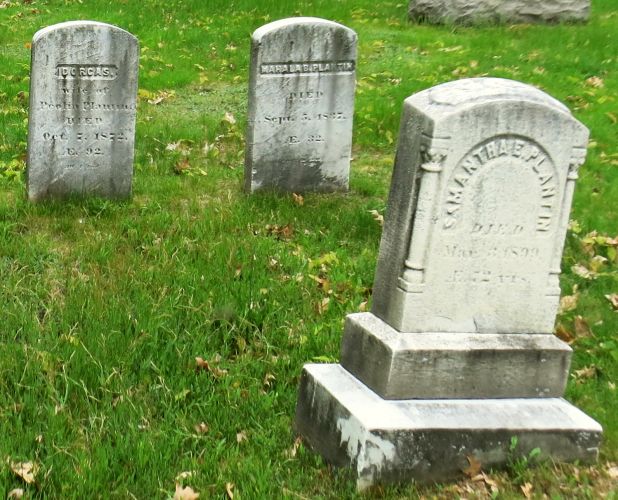
Plantin gravestones in Valley Cemetery (photo by John Wilby from FindAGrave)

Samantha Plantin in a New Boston photo album
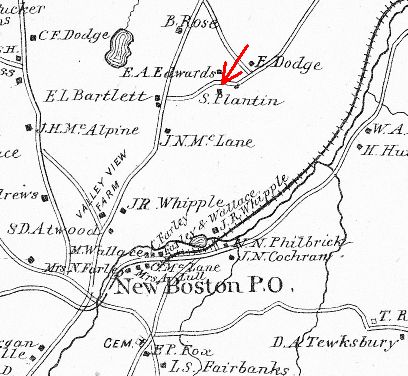
The 1892 map shows that Samantha Plantin's house was located on Beard Road.
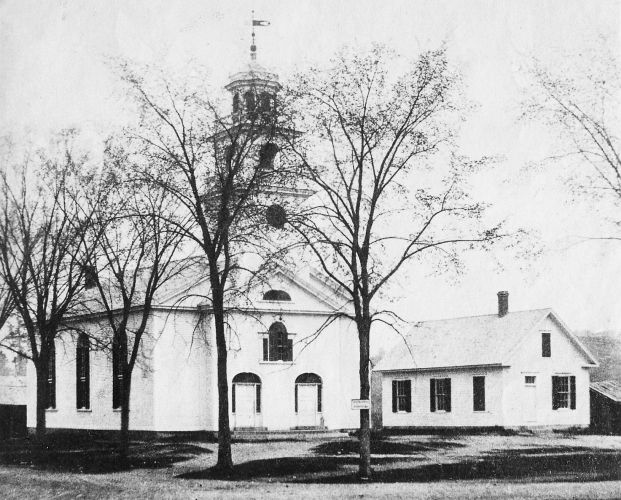
This Baptist church was built in 1832 near the New Boston Town Hall.
Samantha Plantin died of pneumonia in 1899 at age 72 years 10 months. She never married and had no children. In the New Boston "Old Folks' Day" report of 1899, Miss Plantin was described as "a truly remarkable woman, and her life was full of good works... In spite of all the disadvantages of race and circumstance that burdened her younger life, she was a woman whom all could love and respect, and has left a record of which any person might well be proud."
— Dan R. 2023
